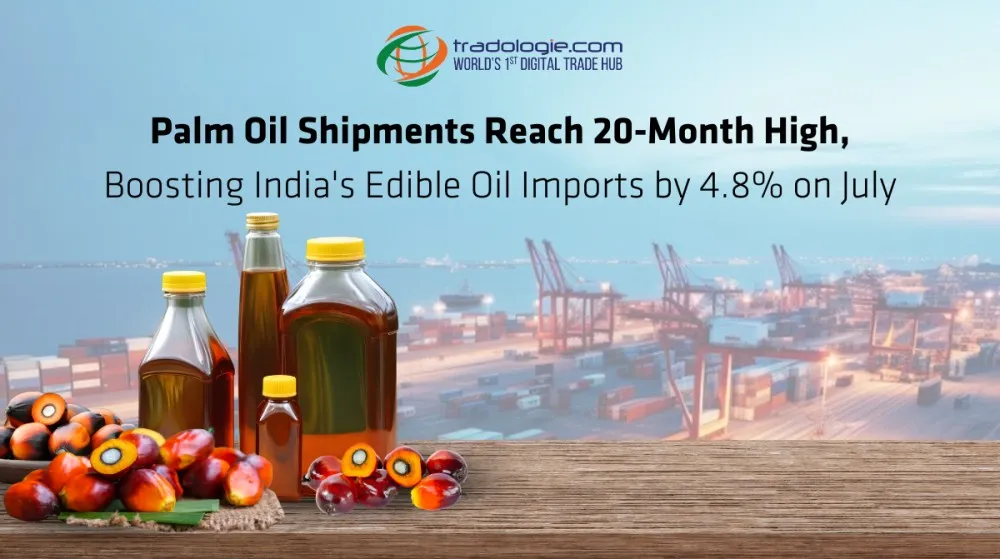The completion of the soybean harvest in Brazil and Argentina has resulted in a significant increase in the global supply of soybeans creating a new scenario for soybean exporters. This surge in supply has directly impacted soybean prices in Ukraine and the United States, as both countries face reduced export demand. The influx of South American soybeans is creating a competitive environment, pushing prices downward in the global market.
This article is all about the changes in the current market dynamics with respect to the international soybean market. So, let us get started.
Current Price Trends in Ukraine
Export prices for soybeans containing GMOs have been on a decline. Presently, the price stands at approximately $410 per ton or 18,500-19,000 UAH per ton, delivered to the Danube ports. There is minimal activity in the Black Sea ports, where terminals are preparing for the new crop of rapeseed and barley. For deliveries to Poland and Romania, soybean suppliers are offering $420-440 per ton, but high shipping costs of $60-80 per ton hinder profitable exports in these directions.
Reaction from Soybean Processors
Soybean processors in Ukraine have responded to the drop in export demand by reducing the purchase prices for GMO soybeans by 500-1000 UAH per ton since the beginning of the month, bringing the price range to 17,000-18,500 UAH per ton delivered to the plant. Despite this, processors continue to face challenges in selling soybean meal and cake. However, the rising demand for soybean oil, which has increased in price following the sunflower oil trend, provides some support to prices and soybean exporters.
Non-GMO Soybean Market Adjustments
Export prices for non-GMO soybeans have also decreased, now ranging between $450-460 per ton or 20,800-21,000 UAH per ton with delivery to the Danube ports. There is a slight uptick in demand for supplies to the western border, with prices around $450-465 per ton DAP Poland, Hungary.
Ukrainian Soybean Planting Overview
As of June 15, 2.03 million hectares of soybeans have been planted in Ukraine, exceeding the forecasted 2 million hectares. This planting area is an increase from 1.8 million hectares in 2023, although some analysts had anticipated the area to rise to 2.2-2.4 million hectares due to a decrease in corn planting. However, farmers have maintained corn planting levels similar to the previous year.
South American Harvest and Market Impact
In Brazil, the soybean harvest is complete, with forecasts maintaining a range of 147-152 million tons. Some local analysts are even increasing their forecasts. In Argentina, the Buenos Aires Grain Exchange reports that 99% of the soybean area has been harvested, with the forecast at 50.5 million tons, slightly above the June USDA estimate.
U.S. Soybean Planting and Export Data
In the United States, as of June 16, 93% of the planned soybean areas were planted, with 93% of seedlings received. Crop conditions rated as good or excellent have decreased by 2% to 70% from the previous week. Soybean exports from the U.S. for the 2023/24 marketing year, as of June 13, amounted to 40.88 million tons, a 16.6% decrease from last year's pace. The USDA forecast stands at 46.3 million tons. Notably, China's soybean imports in May totaled 10.2 million tons, with 8.8 million tons sourced from Brazil and only 1.27 million tons from the United States.
Chicago Stock Exchange Trends
On the Chicago Stock Exchange, July soybean futures dropped by 1.7% to $424.5 per ton, a 7% decline for the month, and November futures fell by 1.4% to $410.3 per ton, an 8.8% decline, due to favourable conditions for U.S. soybean crops.
Future Outlook
The upcoming deliveries of new crop rapeseed will increase the supply of rapeseed meal, further reducing the demand for soybean meal in the EU. This development is expected to put additional pressure on soybean prices in Ukraine, especially considering that new crop soybean prices are currently 4% lower than those of the old crop.
Conclusion
The global soybean market is experiencing significant shifts due to increased supply from South America. Soybean suppliers and exporters in Ukraine and the United States are adjusting to the changing market dynamics, leading to lower prices and altered export strategies. The market outlook remains influenced by ongoing harvests and global demand trends, with continued vigilance required by industry stakeholders to navigate these changes.
To register as a buyer, click here. To register as a seller, click here.





